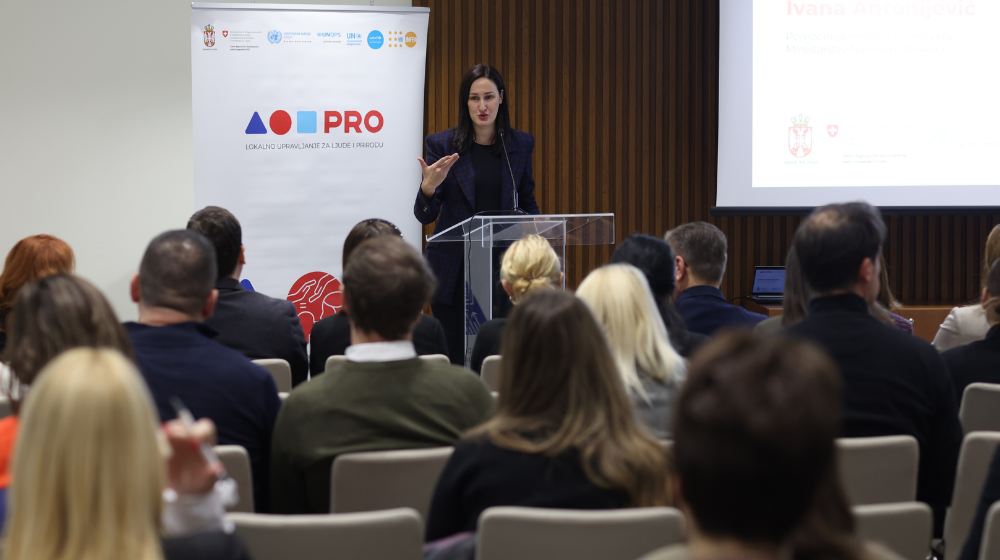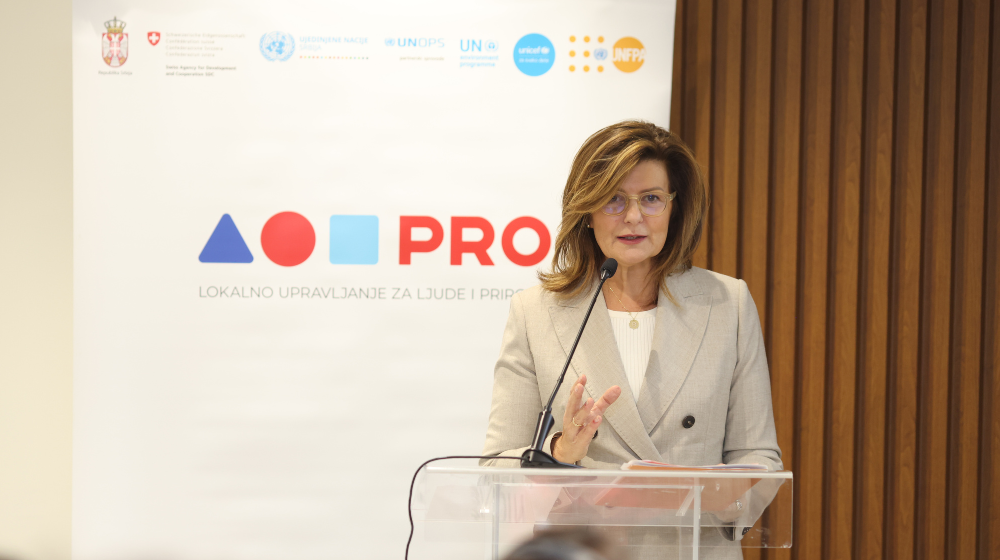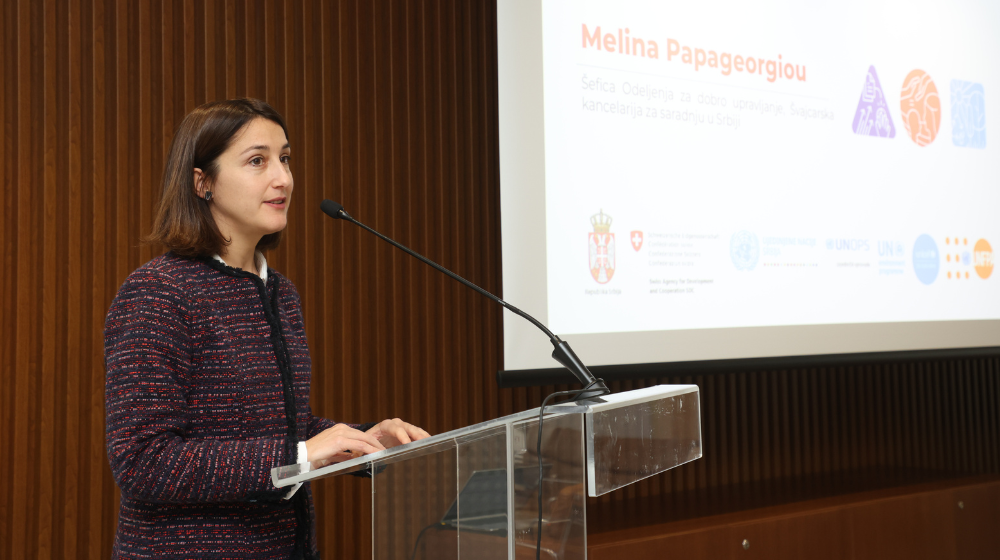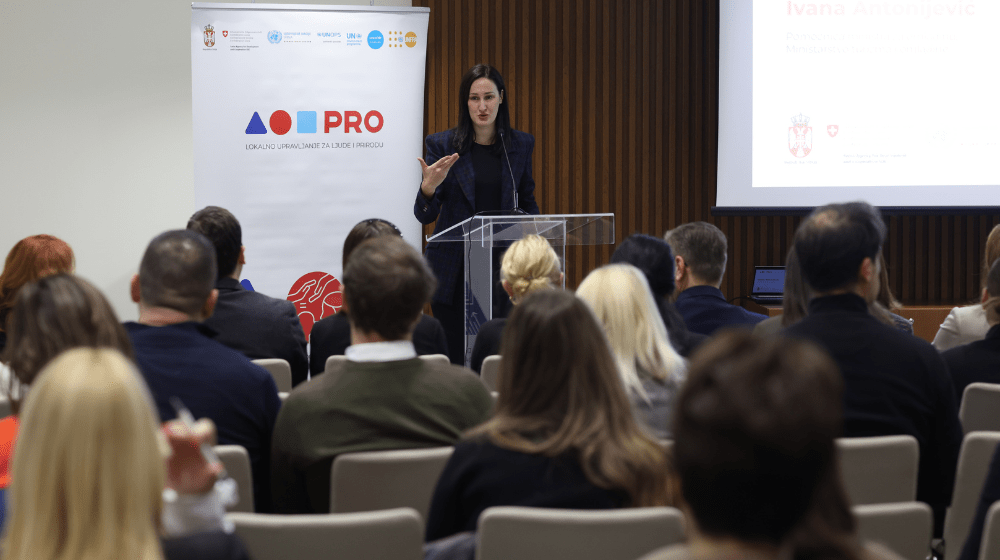Belgrade, December 13, 2024 – Progress has been made in improving the quality of life for young people in Serbia during the first year of implementation of the Youth Strategy 2023-2030, according to data from the Youth Well-being Index presented today. The Youth Well-being Index is an innovative tool for annually monitoring progress in the implementation of the Youth Strategy, marking its first use in Serbia and the region.
With 108 indicators at the national level and 98 at the local level, the Youth Well-being Index provides a comprehensive picture of progress in achieving the goals of the Youth Strategy and improving the position of young people in Serbia. It also enables detailed monitoring of various aspects of young people's lives at all levels. The Index was developed to provide reliable data as a basis for creating and monitoring youth policy implementation, while also encouraging cooperation among all actors involved in working with young people. The value of the Youth Well-being Index is evaluated annually with a "score" ranging from 0 to 100, measured in relation to the situation before the Strategy was implemented. In 2023, the Index achieved a value of 29.22, which represents excellent results, as it means that, in the first year of Strategy implementation, more than a quarter of the desired changes were achieved. It is expected that the Index score will continue to increase over the years, with the aim of reaching the maximum target value by 2030.
Data for the calculation of the Index are collected from statistical and administrative sources, as well as through annual surveys on the status of young people, in close cooperation with the Statistical Office of the Republic of Serbia, local self-governments, youth offices, and other partners.
Composite indexes are a practical tool for monitoring the situation in a specific area or target group, such as young people. The Assistant Minister of Tourism and Youth, Ivana Antonijević, pointed out: “Our shared goal is to ensure the best possible insight into the position of young people at the local level, which will contribute to greater youth participation and activism of in local self-government units, given that local youth policy is our priority. That is why I am very pleased that today we are joined by representatives of city administrations, youth office coordinators, as well as representatives of organizations and associations of/for young people and their umbrella associations”.

“The Youth Well-being Index represents a bridge between national strategic goals, local needs, and the Sustainable Development Goals. It enables young people to realize their potential and actively contribute to their communities. We are assured that this tool will be of great importance to everyone who works to improve the position of young people," stated Borka Jeremic, Head of Office at the United Nations Population Fund in Serbia.

The results of the Index show that, at the national level, there was an increase in the number of young people engaged in entrepreneurship, as well as a rise in the share of young women entrepreneurs reaching to 31.3 percent. The youth unemployment rate decreased from 19.4 percent to 17.5 percent in 2023, and there was also an increase in the number of certified youth workers. The youth poverty risk rate and the proportion of youth aged 15-30 who are unemployed and not in education (NEET), which stood at 15.6 percent in 2023, are both declining. Additionally, the share of young people who report that unemployment and economic problems are the biggest challenges they face has decreased. There was also an increase in the number of young people using services in youth spaces, as well as in the number of active youth organizations.
At the same time, the results of the Index highlighted areas that require additional investment, such as improving spatial capacities and services for young people, increasing the participation of young people in decision-making, and creating a healthy and safe environment for them.
In addition to the national level, the Youth Well-being Index is also measured in 17 local communities: Subotica, Sremska Mitrovica, Sečanj, Kragujevac, Šabac, Novi Pazar, Priboj, Niš, Leskovac, Zaječar, Knjaževac, Čačak, Užice, Vranje, Svilajnac, as well as the Belgrade municipalities of Palilula and Obrenovac. This approach provides a deeper insight into the specific challenges and opportunities in each local community.
At the local level, the Youth Welfare Index shows that more work needs to be done on the availability of cultural content, financial and housing independence, promotion of entrepreneurship and social entrepreneurship, and the creation of new opportunities for young people to express their talents and creativity.
The Director of the Ana and Vlade Divac Foundation, Ana Koeshall, pointed out that the Foundation has been advocating for the improvement of the availability of data on young people for many years. "The Youth Well-being Index is a concrete and practical tool that allows us to better understand the needs of young people and direct the resources and activities of state institutions, donors, and civil society organizations to where they are most needed," Koeshall said.
Development of the Youth Well-being Index was supported by the Government of Switzerland within the Programme "PRO - Local Governance for People and Nature", which is jointly implemented by the United Nations Agencies in Serbia - UNOPS, UNICEF, UNFPA and UNEP, in cooperation with the Government of the Republic of Serbia.
“Success and sustainable development of local communities is directly dependent on their aptitude to foster youth wellbeing. The Youth wellbeing index is the right kind of tool, to provide insights into what young people are thinking; what barriers they face and what would they need to contribute to the growth and resilience of their local communities”- added Melina Papageorgiou, Head of the Governance Domain at the Embassy of Switzerland.

Some of the other conclusions of the first Youth Well-being Index are that it is necessary to improve young people's access to information about opportunities to participate in decision-making processes that concern them, encourage their participation, promote regular preventive examinations, provide better support for the development of young people's potential and competencies, and more actively promote housing policy incentives for youth.


